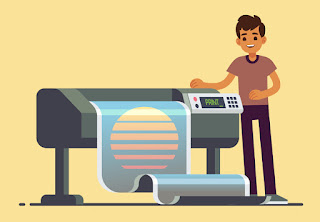
Product packaging can be just as important as your product.
The packaging is what the potential consumer sees, influencing their purchasing decision. In fact, 72% of Americans say the product packaging influences their purchasing decision. Check out these five tips for effective product packaging.
1. On-brand product packaging
Your packaging should be a consistent extension of your brand.
Your brand is how your company looks and feels. Follow your brand style guide when designing the packaging. If you don’t already have a brand style guide created, now would be a great time to get started.
Your brand style guide is used throughout your business to create general guidelines for the look and style of your brand. It establishes colors, fonts, and much more to ensure the consistency of the brand. It should portray your brand’s personality and values.
Just as important as staying on brand is functionality.
2. Functional product packaging
Your product packaging should fulfill its function before all else.
Consider the product packaging’s use within the life of your product.
First, it must adequately protect the product. You should be prepared for both gentle and hard handling. Make sure you account for any special care of the product, including light, ventilation, water, and heat concerns.
Second, it must include all important information to abide by rules and regulations to avoid a potential lawsuit.
Third, the packaging must fit within the size, weight, and volume constraints. Consider making it stackable so it can be easily stocked.
Fourth, the packaging must be easy to open. There’s nothing more frustrating than trying to open a package that makes you think the company doesn’t want you to get to the product.
Fifth, if the packaging will be used throughout the product’s life, then make sure the packaging is adequately made for this purpose. For example, make it resealable and durable.
Over-the-top packaging which does not serve a functional purpose can be a waste of money due to environmentally conscious consumers.
3. Environmentally friendly product packaging
Consumers are becoming increasingly environmentally conscious.
Many are looking for ways to reduce their environmental impact on the earth, including reducing their waste. Therefore, they’ll want to look for companies that align with their goals. Environmentally friendly product packaging can have many different faces.
- Use recycled materials.
- Use recyclable and/or reusable materials.
- Reduce the weight and size of your product packaging.
Environmentally conscious product packaging can help it stand out, among other methods.
4. Product packaging made to stand out
Your packaging is the face of your product.
Little things can make a big difference in customer purchasing decisions. Effective product packaging can trigger impulse buying from customers. If you can find ways to differentiate your product packaging from your competitors, you’ll be better able to stand out, increasing sales.
Research your competitors to see what they are doing. Brainstorm ways your product packaging can stand out. Consider:
- Shape
- Presentation
- Color
- Design
- Layout
However, there are some things you don’t want to change.
- Keep your packaging within your industry parameters.
- Include your product, brand name, and one to two main selling points.
- Be honest. You’re going to want to present your product in the best light, but there’s a line between positive framing and lying. With great products, there’s no need to stretch the truth. And in the end, it’s counterproductive because you’ll anger customers who don’t get what they thought they bought after they’ve unboxed the product.
5. Product packaging for unboxing
Lately, unboxing videos have risen in popularity.
Unboxing videos include customers buying products and then filming themselves unboxing them. They rose in popularity because the viewer could receive second-hand satisfaction from unboxing new products. It also highlighted the importance of the unboxing experience for customers.
From a business’s point of view, unboxing videos provided authentic, customer-produced marketing. Products with unique packaging provide material for great unboxing videos. Get creative and try to generate ways you can enhance the unboxing experience. For example, include a thank you card or stickers.
Unique product packaging examples
Guidelines and tips can be vague, which is why examples are useful.
Check out a few examples of creative product packaging.
- NYC Spaghetti. The designer created product packaging so the spaghetti resembled the Chrysler Building. This catches customers’ attention.
- Butter! Better! Here, the butter container comes with a knife so the user can easily use the butter. This will fix the frustration of lacking utensils. The design expertly combines function and form.
- Görtz 17 Shoelace Box. Here, the company developed more environmentally friendly bags while also keeping things creative. Being a shoe store, it perhaps wasn’t innovative to put a shoe on the box. But it was innovative for them to incorporate real shoelaces that extend from the box’s design.
Hopefully, these examples can spark some product packaging creativity.
Consult your printer about product packaging
Product packaging can get overwhelming.
There are so many details involved. But, we can help the printing be the least of your worries. We can point you in the right direction to avoid printing challenges resulting from your design not quite matching your material. We can also discuss costs and lend our general expertise. Happy product packaging printing!






